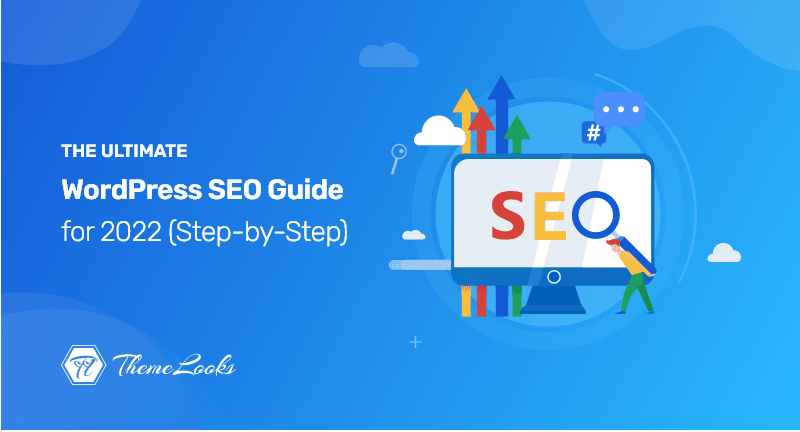
Increasing the number of visitors to your website requires improving your WordPress SEO. There are several guides that can get new users started with WordPress SEO, but many of them are too technical.
You need to follow the best practices for WordPress SEO if you’re serious about increasing website traffic.
To help you improve your WordPress SEO and increase organic traffic, we will provide the top WordPress SEO tips in this guide.
WordPress, according to experts, is SEO friendly. The reason why many people choose WordPress when starting a blog or website has to do with its simplicity.
Despite WordPress being aware of SEO best practices, there are many other things you should do in order to boost your search engine rankings.
For proper WordPress SEO, you need to take a number of actionable steps. Well, let’s start from scratch.
Table of Contents
It can be intimidating for beginners to learn about WordPress SEO, especially if you aren’t a tech person.
You don’t have to worry – it’s not complicated. Learn the step-by-step process of how you can make your WordPress site SEO-friendly. Let’s get started with what is SEO and why it’s important?

The term SEO refers to Search Engine Optimization. The aim of this strategy is to increase the number of visitors to a website by ranking higher in search engines.
In search engine optimization, there is no need to trick Google or play with the system. The goal of SEO is to make a website that can be easily found by search engines through optimized code and formatting.
With search-engine-optimized content, your website will appear higher in search results for people searching for the topics you write about.
Most websites get their traffic from search engines.
In order to rank pages appropriately in search results, Google and other search engines use advanced algorithms. Even so, these algorithms don’t understand your content perfectly – they need your help.
It is impossible for search engines to rank your content without optimizing it. You will miss out on all that traffic if you don’t appear on the search results pages when people search for the topics you write about.
Search engine optimization is extremely important for all business owners to maximize their traffic from search engines.
SEO may get complicated, but it doesn’t have to. Simply mastering a few simple SEO methods to enhance your site can result in a considerable increase in internet traffic.
You don’t need to be a computer expert to use the strategies listed below. If you currently use WordPress, you have everything it takes!
Let’s begin improving your website.
WordPress has a feature that allows you to conceal your site from search results. The goal of this option is to allow you time to work on your site before it goes live.
However, this option might be unintentionally selected, rendering your website inaccessible to search engines.
If your website isn’t showing up in search results, the first thing you should verify is that this option is unchecked.
Simply log in to your WordPress site’s admin panel and navigate to the Settings > Reading page.
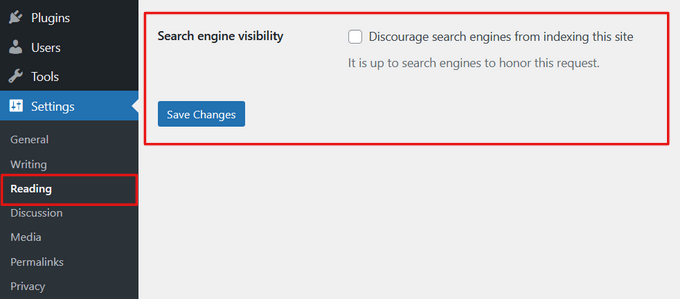
Scroll down to the ‘Search Engine Visibility’ section and uncheck the box next to ‘Discourage search engines from indexing this site.’
Please remember to click on the ‘Save Changes’ button to store the changes.
SEO-friendly URLs include terms that clearly define the page’s content and are easy to understand by both humans and search engines.
Here are some examples of SEO-friendly URLs:
https://themelooks.com/how-to-create-a-website-using-wordpress/
https://themelooks.com/reasons-to-use-wordpress-for-your-website/
Notice how legible these URLs are, and how a user can estimate what they would see on the website simply by glancing at the URL content.
Using an SEO-friendly permalink structure increases your chances of ranking higher in search results. When you have poor permalinks on your site, use these instructions to regenerate permalinks in WordPress.
Here’s how to inspect and adjust the permalink structure of your WordPress site.
You must go to the Settings > Permalinks page. To save your selections, select the post name option and then click the ‘Save Changes’ button.
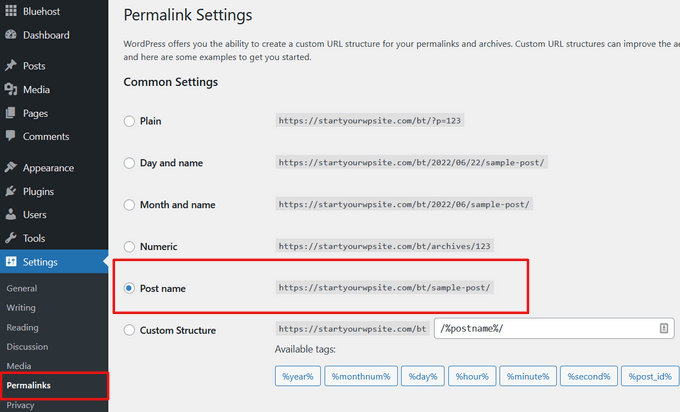
N.B: Please don’t update your permalink structure unless you’re utilizing the numbers option if your website has been functioning for more than 5-6 months. Continue to use Day and Name or Month and Name if you’re already doing so.
If you change your permalink structure on an existing site, you will lose all of your social media share counts and risk losing your current SEO rating.
If you need to update your permalink structure, engage an expert to put up suitable redirects. You will continue to lose social share numbers on the pages.
If you are just getting started with your website, you must decide whether to use www (http://www.example.com) or non-www (http://example.com) in the URL.
Because search engines perceive them to be two distinct websites, you must pick one and stick with it.
You may change your preferences by going to the Settings > General page. Fill up the ‘WordPress Address’ and ‘Site Address’ columns with your selected URL.

Regardless of what others claim, there is no benefit to employing one over the other in terms of SEO.
One of the nicest things about WordPress is that there is a plugin for everything, including SEO. There are many WordPress SEO plugins available, making it difficult for beginners to select the best WordPress SEO plugin.
Instead of installing various plugins for individual SEO activities, we will assist you in selecting the finest WordPress SEO plugin that does everything and is completely free.
When it comes to selecting the finest WordPress SEO plugin, you will most likely be limited to two options: Yoast SEO, and Rank Math.
Both SEO plugins have advanced capabilities such as TruSEO on-page analysis, rich snippets schema markup, social network integration, breadcrumb navigation, extensive eCommerce SEO support for WooCommerce, and local SEO.
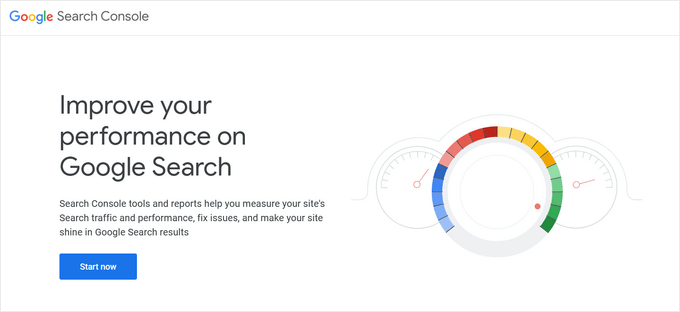
Google Search Console, often known as Webmaster Tools, is a suite of tools provided by Google to website owners to help them understand how their content is viewed by search engines.
It offers analyses and data to assist you in understanding how your sites appear in search results. You can also view the actual search phrases that people use to locate your website, how each page displays in the search engine results, and how frequently your sites are clicked.
All of this data helps you determine what works and what doesn’t on your website. After that, you may organize your content strategy appropriately.
Google Search Console will also notify you if there is an issue with your websites, such as when search crawlers are just unable to access it, duplicate material, or limited resources.
After you’ve added your website to Google Search Console, go to the Sitemap option on the left and copy the last portion of the sitemap URL.

To save your changes, click the submit button.
Google Search Console will now examine your sitemap and utilize it to optimize the crawling of your website.
Your sitemap will be marked as pending after you have successfully added it. Google does take some time to crawl your site. After a few hours, you should be able to check some sitemap statistics. It will display the number of links it discovered in your sitemap, how many of them were indexed, the ratio of photos to web pages, and so on.
We recommend that you visit your Search Console at least once a month to get insights and track the success of your website’s SEO.
Beginners frequently make the mistake of believing that simply installing and activating a WordPress SEO plugin is sufficient. SEO is a continuous process that you must maintain if you want to achieve the best results.
All of the best SEO plugins allow you to add an SEO title, meta description, and target keyword to each blog post and page. It also provides you a preview of what people will see when they Google your website.
To receive the most hits in search engine results, we recommend that you tweak your title and description.
Simply scroll down to the SEO area while composing your blog article and take full benefit of it.

If you’re wondering how you make the best out of it. Then see this guide on how you can optimize your blog posts for SEO – 11 proven tips. We are firmly recommending you read this guide. Because without on-page SEO, your site will not rank higher.
Many newcomers make smart estimates about what subjects people are looking for and what they should include in their blogs and websites.
It’s similar to firing an arrow in the dark. You don’t have to do that when you can utilize genuine data to figure out what customers want.
Content authors and SEO specialists utilize keyword research as a research strategy. It assists you in identifying keywords that customers type into search engines to find information, goods, and services in your sector.
You may then employ those terms and phrases to increase search traffic to your website.
There are several keyword research tools available (both free and paid). We recommend SEMRush since it can help you identify keywords and even find out where your rivals are ranking.
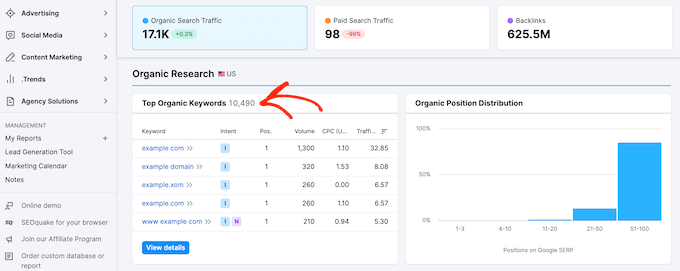
You may see this guide on Top 8 Keyword Research Tools in 2022: Effective SEO Strategy, to find out the best suitable tool for you doing keyword research.
You will be ahead of most websites if you follow the basics of WordPress SEO and utilize the finest WordPress SEO plugin.
If you want even better results, though, you should follow the WordPress SEO recommended practices listed below.
These aren’t very technical, and in most cases, you won’t even need to touch any code. However, if you follow them, they will make a significant impact.

WordPress allows you to categorize and tag your blog content. This makes it simple for you to organize your material by topic and for your users to discover the information they need.
Categories and tags also assist search engines in understanding the structure and content of your site.
Beginners sometimes become perplexed about how to effectively use categories and tags. Here’s how we handle categories and tags after explaining it to thousands of readers.
Categories are intended for broad groupings of your articles. If your blog were a book, categories would serve as the table of contents.
On a personal blog, for example, you can have categories such as music, food, travel, and so on. Because categories are hierarchical, they can have children.
Tags, on the other hand, are more precise keywords that characterize the contents of a single post. For example, a blog post placed under the food category may include tags such as salad, breakfast, pancakes, and so on. Consider these to be the indexes portion of a textbook.
By appropriately utilizing categories and tags, you make it easier for your users to navigate your website. Because it is simple for consumers, it also makes it simple for search engines to crawl your website.
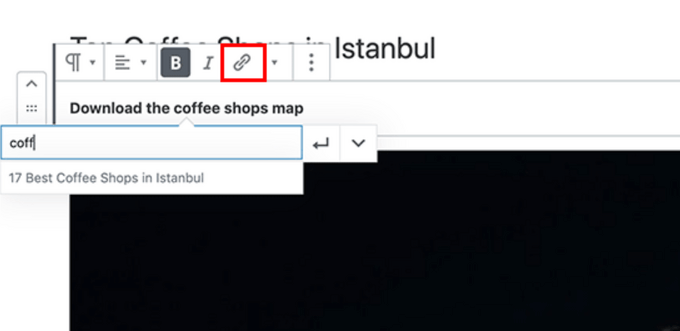
Search engines assign a score to each page on your website (page authority). This score’s formula is kept secret so that individuals cannot manipulate the results. However, connections are the most typical authority signals.
This is why it’s critical to provide links to your own material in your other blog articles and pages.
Make it a point to interlink your own content wherever feasible. Create a pre-publish blog post checklist that requires authors to interlink at least three previous blog articles if you have several authors.
This will raise your page views, the number of time people spend on your site, and, eventually, the SEO score of your individual blog articles and pages.

Comments on your website may be a good indicator of user interest. More connections back to your site, more traffic, and better SEO all result from engaged users.
However, you must ensure that your comments are genuine and not spam. Spammers leave comments with poor links, which can harm or even damage your search rankings.
If your blog entries receive a high volume of real, spam-free comments, you should be proud of yourself for creating such an entertaining website!
However, having too many comments on an article might cause it to load slowly, affecting your search engine results. (Continue reading to learn more about how speed impacts SEO.)
You may separate comments into numerous pages to prepare your website to manage the load of comments placed on your server and speed.
As previously stated, links assist search engines in determining which sites are significant. When you link to another website, you give that link some of your site’s SEO score. This SEO score is referred to as “link juice.”
To get high search rankings, you must ensure that you receive more link juice from other websites than you give away.
When you add the “nofollow” tag to external links (links to websites that you do not own), search engines are instructed not to follow those links. This allows you to conserve link juice.
In HTML, a typical external link looks like this:
<a href="http://example.com">Example Website</a>
A nofollow external link looks like this:
<a href="http://example.com" rel="nofollow">Example Website</a>
WordPress does not have a setting to make links nofollow by default. However, if you use any SEO plugin, it simplifies the process.
Simply choose the Add “nofollow” to link option when adding a link.
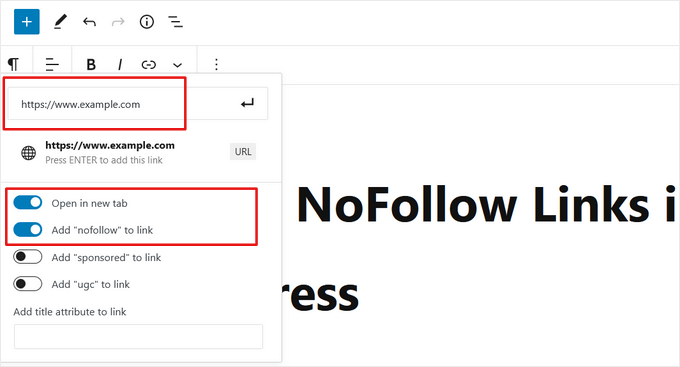
In addition to the home page, category archives, tags archives, date archives, author pages, and so forth, WordPress displays and links to your posts from a variety of places.
Each of these pages displays the full text of the article by default. As a result, your site’s SEO may be negatively impacted, since search engines may perceive it as duplicate content. Your archive pages will also load slower if you have full articles.
The number of page views you receive also depends on how you display your articles. You can, for instance, allow subscribers to your RSS feed to read the full article without ever visiting your website.
Rather than displaying full articles, summaries or excerpts are the easiest way to solve this problem.
By selecting excerpt from Settings > Reading, you can achieve this.
The number of page views you receive also depends on how you display your articles. You can, for instance, allow subscribers to your RSS feed to read the full article without ever visiting your website.
Rather than displaying full articles, summaries or excerpts are the easiest way to solve this problem.
By selecting excerpt from Settings > Reading, you can achieve this.
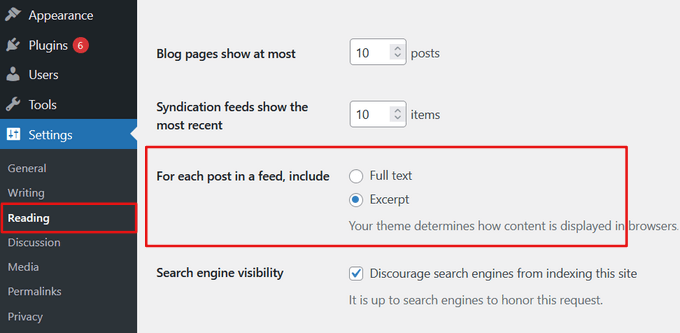
If your site is slow or gets hacked, your search engine rankings will be severely affected even if you follow all the above WordPress SEO tips and best practices.
If your site is slow or not secure, you may lose search engine traffic as a result. Find out how to prevent this.
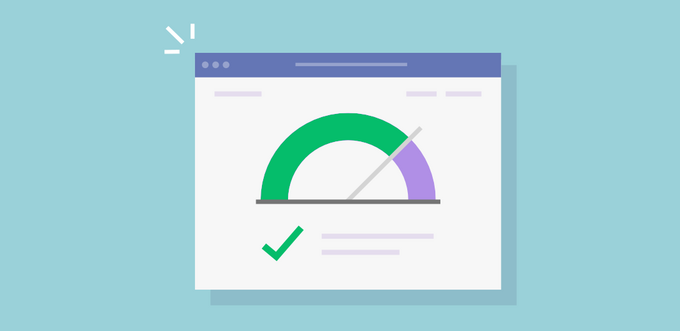
There is research showing that humans in the internet age have an attention span that is shorter than that of goldfishes.
A user’s decision to stay or leave a website is made within the first few seconds of visiting the site.
The time you have to engage users and present your content on your website is limited. Make your visitors wait for your website to load instead of wasting their time.
Google prioritizes faster websites in its search results because it is so important to provide a great user experience. The faster a website loads, the higher it’s ranking on Google will be.
While images add to a website’s engagement, they also can take longer to load than text. Images can slow down your website if you don’t take care of their sizes and quality.
To improve the speed of your website, make sure your images are optimized. Additionally, you can use descriptive titles and alt tags for your images to optimize them for search engines.
In order to get a better understanding of your image, search engines require these tags. As screen readers can read the alt text to users with visual impairments, they can also benefit from the use of these tags.
When you upload an image to WordPress, you can easily add a title and alt tag to it.
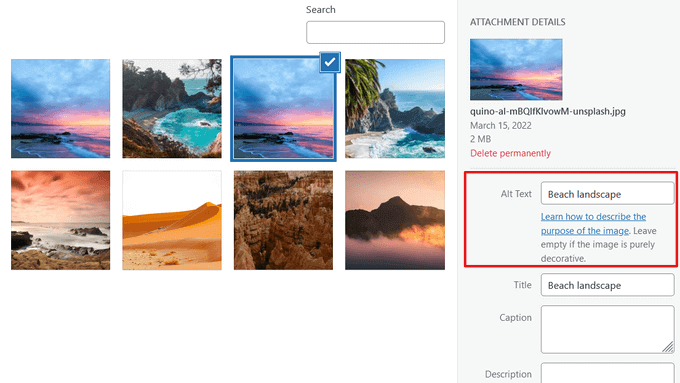

About 20,000 websites a week are blacklisted by Google for malware, and around 50,000 are blacklisted for phishing. A blacklisted site does not appear at all in search results.
As a result, a good ranking depends on the security of your WordPress site. When your site is breached by a hacker, all your SEO efforts could go to waste.
Good news: Keeping your WordPress site safe isn’t that hard – read our step-by-step guide to keep your site secure.
Our goal is to help you learn how to properly optimize your WordPress website for search engine optimization. When the search engines process your changes, you should begin to see an increase in traffic after you implement these WordPress SEO tips.
Well, you may also want to take a look at how to make categories and subcategories in WordPress, or our expert picks WordPress block patterns – a complete overview of how to use them.
If you like this post, be with ThemeLooks and subscribe to our WordPress video tutorials on YouTube. We may also be found on Twitter, LinkedIn, and Facebook.